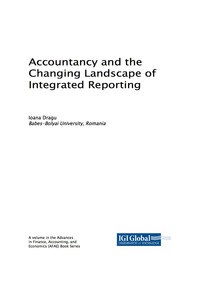Question
Complete Parts I, II, and III. Part I. Master Budgets Farmer Manufacturing, Inc. prepares their budgets on a quarterly basis. Below is information which will
Complete Parts I, II, and III.
Part I. Master Budgets
Farmer Manufacturing, Inc. prepares their budgets on a quarterly basis. Below is information which will be used to prepare their first quarter budget.
Forecasted sales in units for each product are as follows:
January
February
March
Product A
22,000 units
25,000 units
33,000 units
The average selling price is $36 per unit.
Below is additional information which will be needed to prepare the master budget:
Company policy requires that each month's ending inventory (finished goods) be equal to 40% of the next month's estimated sales. Ending inventory on December 31 was 8,800 units. Sales for April are projected to be 39,000 units, and sales for May are projected to be 42,000 units.
Information on material and labor requirements include:
Product A
Ingredient Q (per unit)
3 pounds
Price: Ingredient Q
$2.75 per pound
Direct labor hours (per unit)
0.70
Direct labor rate per hour
$16.00
Company policy requires that the ending inventory for raw material be equal to 30% of the following month's estimated material requirements. Ending inventory on December 31 for Ingredient Q was 20,800 pounds.
Manufacturing overhead includes both variable and fixed components. Overhead is allocated based on direct labor hours. Variable overhead is budgeted at $3.25 per direct labor hour required. Fixed overhead is budgeted at $34,500 per month.
Selling expenses include sales commissions and sales salaries. Commissions are paid at 4% of sales. Monthly sales salaries are $4,200. General and administrative expenses are $6,400 per month.
Part I Requirements:
- monthly Sales Budget for the first quarter.
- monthly Production Budget for the first quarter.
- monthly Direct Material Purchases Budget for the first quarter.
- monthly Direct Labor Budget for the first quarter.
- monthly Overhead Budget for the first quarter.
- monthly Selling, General, & Administrative Expense Budget for the first quarter.
Part II. Flexible Budgets
Polyfield Manufacturing prepares their annual budgets at the beginning of the year along with a mid-year update in June for any changes in estimates or business conditions. When the budget was prepared for the year, management made the following estimates for the month of July assuming sales of 65,000 units which sell for $10 each.
Sales
$650,000
Cost of Goods Sold
$406,250
Gross Profit
$243,750
Operating Expenses
Selling expenses (variable)
$58,500
Selling expenses (fixed)
$35,000
Administrative expenses
$22,000
Income before tax
$128,250
Tax expense
$26,933
Net income
$101,318
You are working as Polyfield's cost accountant, and management comes to you in June with some news about the projections for July. They recently received a large unexpected order from one of their biggest customers. Instead of 65,000 units, management is expecting to sell 85,000 units in July. They would like to see what the budget will look like assuming 85,000 units are sold rather than 65,000. Management assumes that the tax rate will remain unchanged.
Part II Requirement:
Use the information above to prepare flexible budget for the month of July assuming 85,000 units will be sold. Assume that the company has existing capacity and will not incur any additional fixed costs.
Part III. Manufacturing Variances
In your chapter reading, you've learned about the primary manufacturing variances which include:
- Material price variance
- Material efficiency variance
- Labor rate variance
- Labor efficiency variance
- Variable overhead efficiency variance
- Variable overhead spending variance
- Fixed overhead spending variance
- Production-volume variance
You're working as an accounting analyst with a large manufacturing company, Bolton & Sons, Inc., when your manager comes to you with a request. The CFO is very concerned about the manufacturing variances from the previous month which are as follows:
Material price variance
$7,300 (unfavorable)
Material efficiency variance
$2,000 (favorable)
Labor rate variance
$6,200 (unfavorable)
Labor efficiency variance
$1,500 (unfavorable)
Variable overhead efficiency variance
$2,400 (unfavorable)
Variable overhead spending variance
$2,900 (favorable)
Fixed overhead spending variance
$3,600 (favorable)
Production-volume variance
$4,700 (unfavorable)
The CFO doesn't understand why these numbers are "all over the place." You have been placed in charge of the research, analysis, and explanation of these variances.
Explain following associate with each variance:
- Causes or drivers of the variance
- Other departments or employees that you consulted for information
- Any plans to adjust or combat these variances moving forward
Step by Step Solution
There are 3 Steps involved in it
Step: 1

Get Instant Access to Expert-Tailored Solutions
See step-by-step solutions with expert insights and AI powered tools for academic success
Step: 2

Step: 3

Ace Your Homework with AI
Get the answers you need in no time with our AI-driven, step-by-step assistance
Get Started


